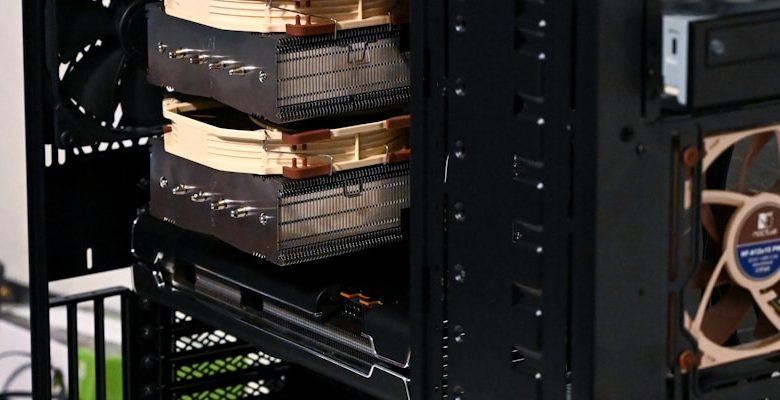How to Use Hardware Wallets for Maximum Protection

- Understanding the importance of hardware wallets in cryptocurrency security
- Comparing different types of hardware wallets and their features
- Setting up your hardware wallet for the first time: A step-by-step guide
- Best practices for storing and backing up your hardware wallet seed phrase
- Using hardware wallets to securely manage multiple cryptocurrencies
- Protecting your hardware wallet from physical and digital threats
Understanding the importance of hardware wallets in cryptocurrency security
When it comes to protecting your cryptocurrency investments, ensuring the security of your digital assets is paramount. One of the most effective ways to enhance the security of your cryptocurrencies is by using hardware wallets. These physical devices are specifically designed to store your private keys offline, making them less vulnerable to hacking attempts and online threats.
Hardware wallets provide an extra layer of protection by keeping your private keys offline, away from potential cyber attacks. By storing your keys on a hardware wallet, you can significantly reduce the risk of unauthorized access to your funds. This added security measure is crucial in an increasingly digital world where cyber threats are becoming more sophisticated and prevalent.
Understanding the importance of hardware wallets in cryptocurrency security is essential for anyone looking to safeguard their digital assets. By using a hardware wallet, you can have peace of mind knowing that your private keys are stored securely offline, reducing the risk of unauthorized access to your funds. Investing in a hardware wallet is a small price to pay for the added security and protection it provides for your cryptocurrencies.
Comparing different types of hardware wallets and their features
When comparing different types of hardware wallets, it’s important to consider their features to determine which one best suits your needs. Some popular options on the market include Ledger Nano S, Trezor Model T, and KeepKey.
- **Ledger Nano S**: This hardware wallet is known for its compact design and high level of security. It supports a wide range of cryptocurrencies and offers a secure way to store your private keys.
- **Trezor Model T**: The Trezor Model T is another popular choice among cryptocurrency enthusiasts. It features a touchscreen display and supports more than 1000 coins and tokens.
- **KeepKey**: KeepKey is known for its sleek design and ease of use. It offers a large display for easy navigation and supports a limited number of cryptocurrencies.
When choosing a hardware wallet, consider factors such as security features, ease of use, and coin support. Ultimately, the best hardware wallet for you will depend on your individual needs and preferences.
Setting up your hardware wallet for the first time: A step-by-step guide
To set up your hardware wallet for the first time, follow these step-by-step instructions:
1. **Connect the Hardware Wallet**: Begin by connecting your hardware wallet to your computer using the provided USB cable. Make sure the connection is secure before proceeding.
2. **Initialize the Wallet**: Once connected, the wallet will prompt you to initialize it. Follow the on-screen instructions to set up a new wallet. This will involve creating a secure PIN code and writing down your recovery seed phrase.
3. **Backup Your Seed Phrase**: Write down the seed phrase on the provided recovery sheet and store it in a safe place. This seed phrase is crucial for recovering your funds if your wallet is lost or damaged.
4. **Verify Your Seed Phrase**: After writing down the seed phrase, the wallet will ask you to verify it. This is to ensure that you have accurately recorded the seed phrase and can access it when needed.
5. **Install Necessary Software**: Depending on the hardware wallet you are using, you may need to install specific software or apps on your computer or mobile device. Follow the instructions provided by the wallet manufacturer.
6. **Set Up Additional Security Features**: To enhance the security of your hardware wallet, consider enabling additional features such as multi-signature support, passphrase protection, or setting up a lock timer.
7. **Transfer Funds**: Once your hardware wallet is set up and secured, you can transfer your cryptocurrency funds to the wallet address provided. Be sure to double-check the address before initiating any transfers.
By following these steps, you can set up your hardware wallet for the first time and ensure maximum protection for your cryptocurrency assets.
Best practices for storing and backing up your hardware wallet seed phrase
To ensure the security of your hardware wallet seed phrase, it is essential to follow best practices for storing and backing it up. One effective method is to engrave the seed phrase on a metal plate, as this provides protection against physical damage and tampering. Another option is to use a specialized seed phrase backup device that offers added security features. It is crucial to keep multiple copies of the seed phrase in different secure locations to prevent loss in case of fire, theft, or other disasters. Remember to never store the seed phrase digitally or in plain sight, as this can make it vulnerable to hacking or theft. By following these best practices, you can ensure that your cryptocurrency investments are safe and secure.
Using hardware wallets to securely manage multiple cryptocurrencies
When it comes to managing multiple cryptocurrencies securely, hardware wallets are an excellent option. These devices provide an extra layer of protection by storing your private keys offline, away from potential hackers. By using hardware wallets, you can have peace of mind knowing that your digital assets are safe and secure.
One of the main advantages of using hardware wallets is the ability to store a wide variety of cryptocurrencies in one place. This means you can manage your Bitcoin, Ethereum, Litecoin, and other digital assets all from one device. This convenience makes it easier to keep track of your investments and simplifies the process of securely storing multiple cryptocurrencies.
Another benefit of hardware wallets is their ease of use. Most devices come with simple setup instructions, making it easy for even beginners to get started. Additionally, the intuitive interface of hardware wallets makes it simple to send and receive multiple cryptocurrencies with just a few clicks.
Protecting your hardware wallet from physical and digital threats
When it comes to protecting your hardware wallet, both physical and digital threats need to be taken into consideration. By following some simple steps, you can ensure that your wallet remains secure.
- Keep your hardware wallet in a safe place when not in use. This will help protect it from physical damage or theft.
- Use a strong and unique PIN code to prevent unauthorized access to your wallet.
- Regularly update the firmware on your hardware wallet to protect against any known vulnerabilities.
- Avoid connecting your hardware wallet to public Wi-Fi networks, as they can be less secure and increase the risk of hacking.
- Consider using additional security measures such as a passphrase or multi-signature verification for added protection.
By being proactive and implementing these security measures, you can help safeguard your hardware wallet from both physical and digital threats, giving you peace of mind when it comes to protecting your cryptocurrency assets.



